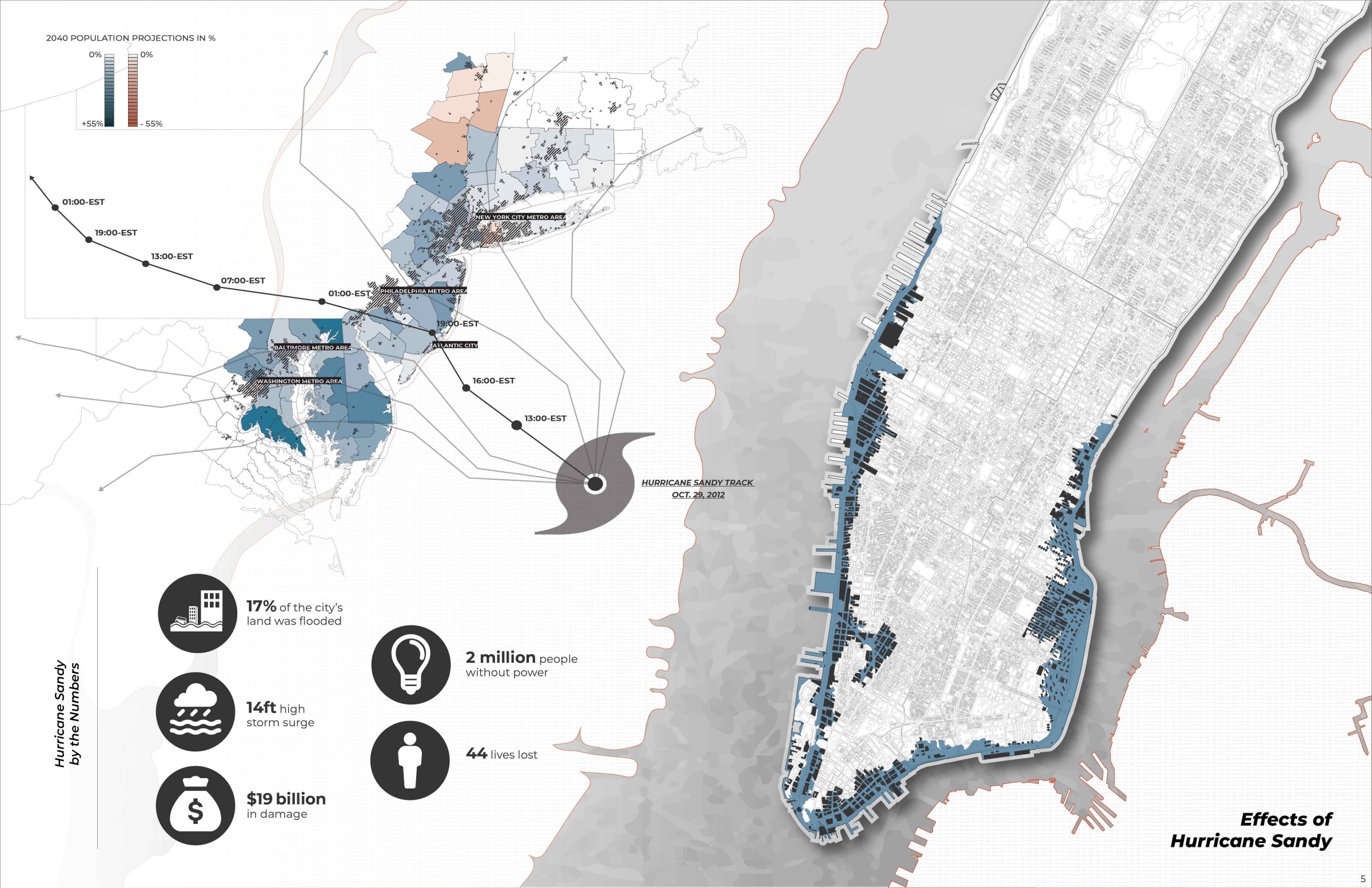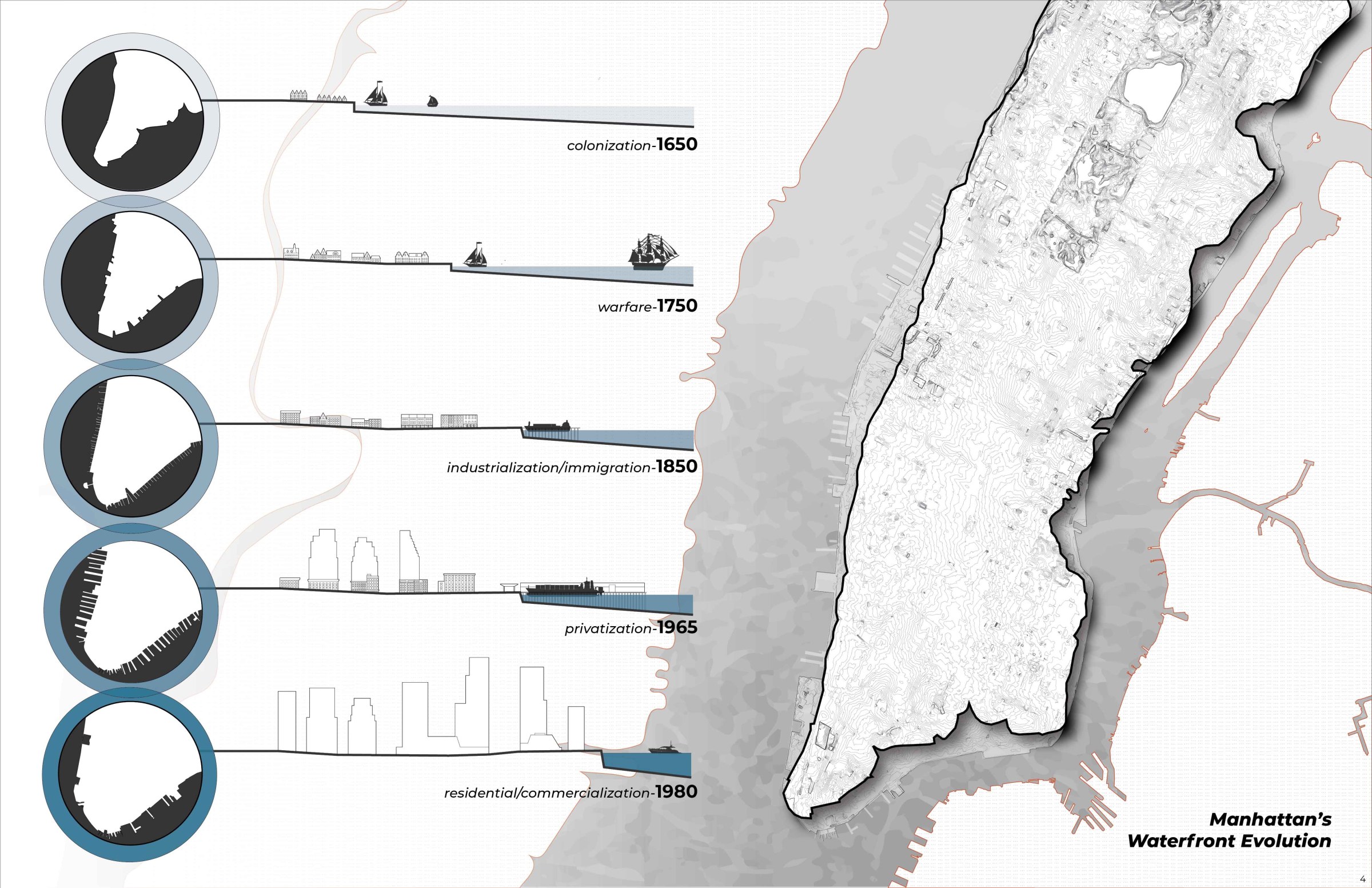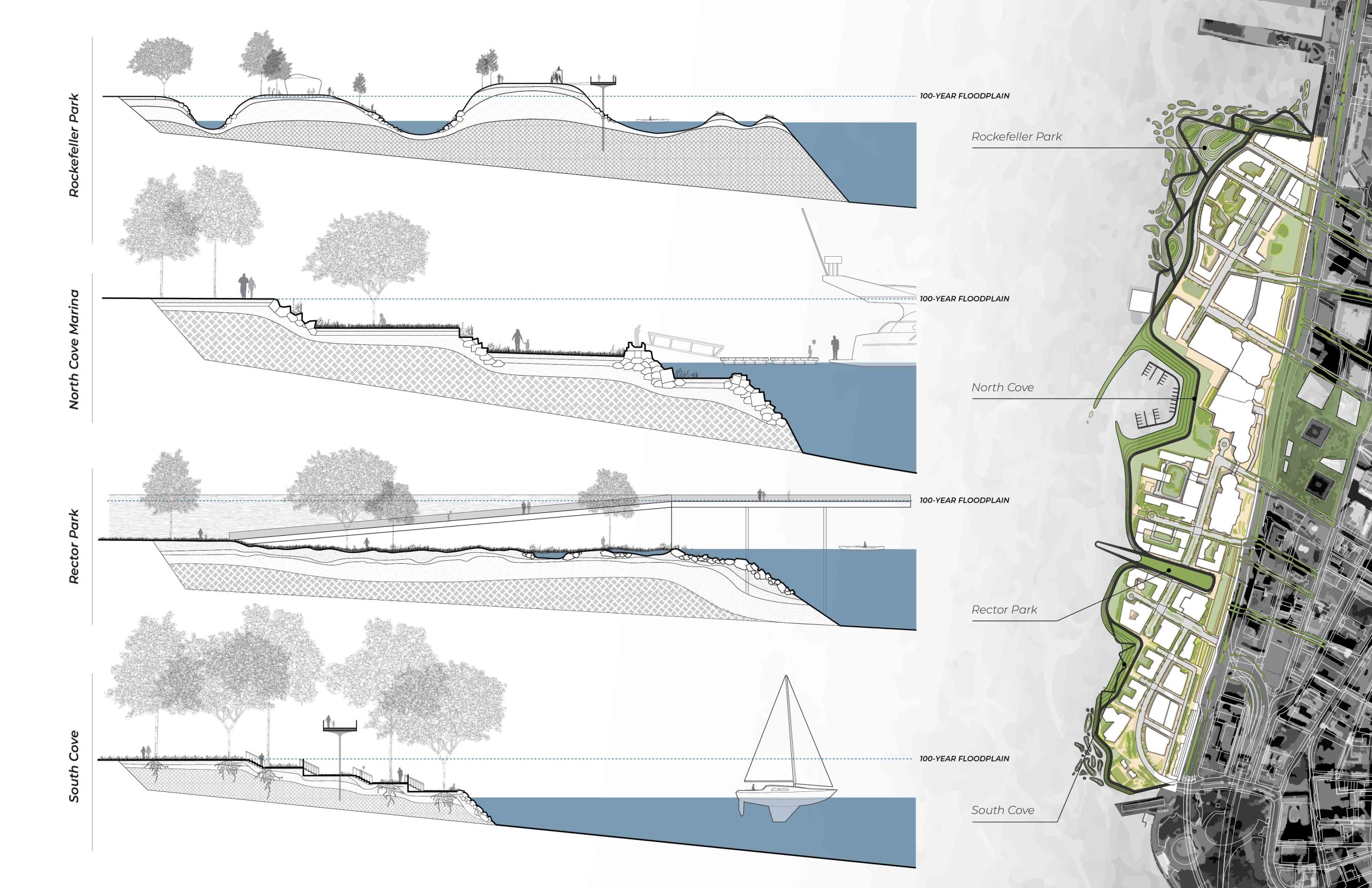Thesis Highlights
"A New Edge"

Harrison Sturner, 2021
"A New Edge: Breaking Down The Bulkhead"
Vibrant urban centers, poised for continuous growth, are constantly threatened by their waterfront locations. In response to Hurricane Sandy, a strategy to convert 10 miles of Lower Manhattan’s waterfront into a continuous urban flood protection infrastructure was proposed, known as the Big U. This project aims to mitigate water inundation through three types of physical flood protection structures: earthen levee berm, T-Wall concrete structure, and deployable wall structure. While these systems are productive in areas where the waterfront bulkhead is at a historic low elevation, new systems must be established for more recent waterfront neighborhoods built at higher elevations.
Battery Park City, a residential and commercial waterfront neighborhood built through landfill expansion in the late 1970’s, will envision ecological infrastructure as a means of protection. Through new absorptive landscapes collecting, filtering, and dispersing flood waters during storms, a new softened edge/transitional zone that acts as a sponge, will test the relationship between the built and natural environment.
WORK





